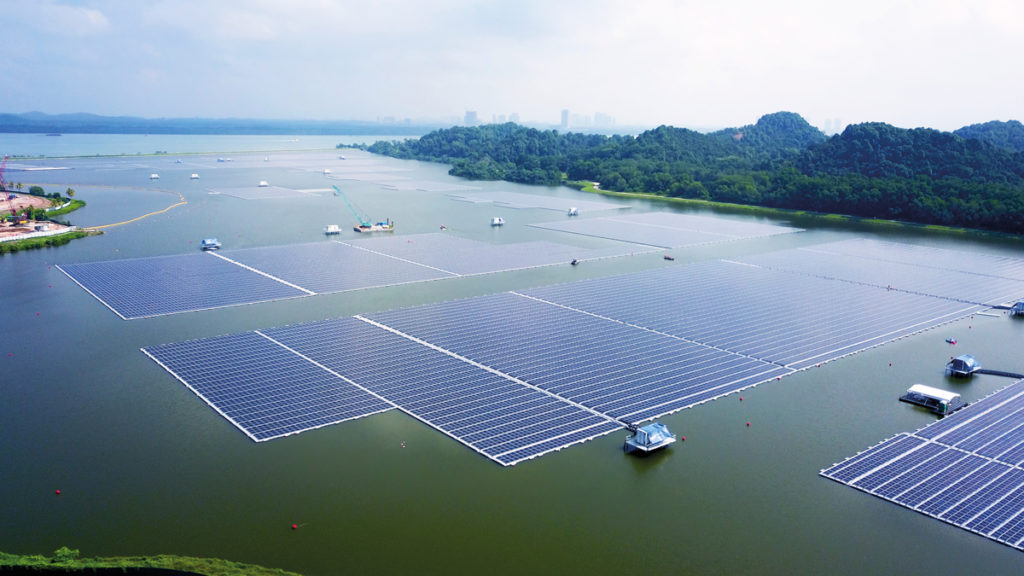Tengeh Floating Solar Farm
July 19, 2021

The solar photovoltaic (PV) farm is one of the world’s largest inland floating solar PV systems. The commencement of its operations marks a significant step towards enduring energy sustainability in water treatment, making Singapore one of the few countries in the world to have a 100 per cent Green waterworks system while contributing to the national goal of quadrupling solar energy deployment by 2025.
The electricity generated from the solar farm will be sufficient to power Singapore’s five local water treatment plants, offsetting about 7 per cent of National Water Agency PUB’s annual energy needs and reducing carbon footprint, which is equivalent to powering about 16,000 four-room HDB flats and reducing carbon emissions by about 32 kilo tonnes annually, the same as taking 7,000 cars off the roads.
Innovative Construction
The project was completed on time with full safe management measures in place, despite manpower and supply chain constraints due to the COVID-19 pandemic. New ways of working were needed to mitigate the impact, and one such way was conceptualising and implementing a new engineering and construction technique to design a custom-built jig that increased the rate of solar panel assembly by up to 50 per cent.
Partnering with a technology spinoff from the National University of Singapore, this project is also the first in the world to deploy advanced drone electroluminescence imaging technology on a utility-scale PV system. Drone electroluminescence imaging captures X-ray-like signals emitted by PV modules to accurately and rapidly pinpoint defects that could be caused by a variety of factors from manufacturing to installation stage. Identifying and replacing defective modules from the start has ensured that the PV system is running in optimal condition.
Mitigating Environmental Impact
The main concern with deploying solar panels on reservoirs was the potential impact on surrounding environment, biodiversity and water quality. A comprehensive environmental impact study, which included biodiversity surveys, water quality monitoring and modelling, along with consultations with nature groups, was carried out between 2015 and 2018. Results from PUB’s testbed deployed at Tengeh Reservoir in 2016 showed no observable change in water quality nor significant impact on surrounding wildlife.
Referencing the study, the project was carefully designed to minimise impact on the reservoir’s water quality, flora and fauna. Sufficient gaps between solar panels were incorporated to improve the airflow and allow sufficient sunlight to reach aquatic life. Additional aerators were also put in place to maintain oxygen levels in the reservoir. Floats deployed are made using high-density polyethylene (HDPE)—a certified food-grade material that is recyclable, UV-resistant and corrosion resistant.
For more of the latest on Energy projects & topics, read the 2021 Energy issue
PROJECT DATA
| Project Name | Tengeh Floating Solar Farm |
| Location | Tengeh Reservoir, Singapore |
| Project Start Date | August 2020 |
| Completion/Opening Date | July 2021 |
| Site Area | 45 hectares |
| Capacity | 60 megawatt-peak (MWp);22,000 solar panels |
| Implementing Agencies | Sembcorp Industries; National Water Agency PUB |
| Images/Photos | National Water Agency PUB |
To read the complete article, get your hardcopy at our online shop/newsstands/major bookstores; subscribe to FuturArc or download the FuturArc App to read the issues.

